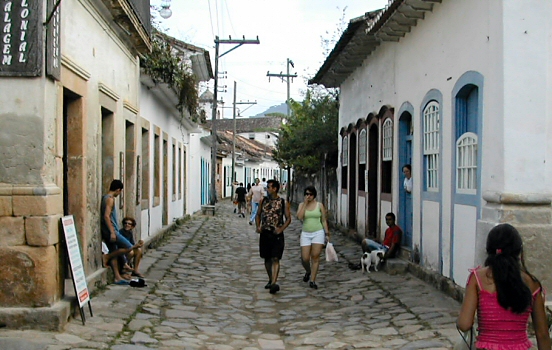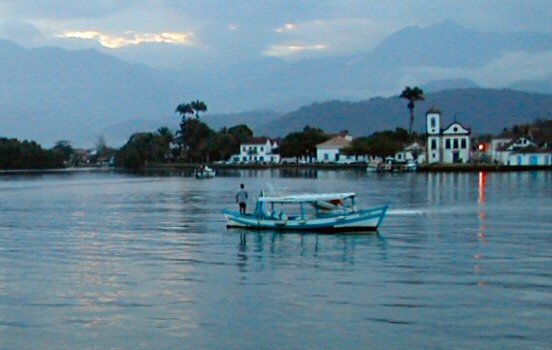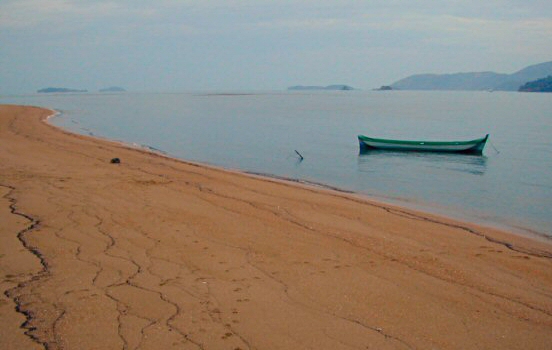Paraty is one of those colonial towns frozen in amber, where the streets were laid by sadistic masons with a grudge against ankles. Cobblestones the size of baby skulls, slick with centuries of rain and regret. One sudden move and you’re on the ground.
Once a hub for gold smugglers and imperial ambitions in Brazil’s Costa Verde area, Paraty now conducts a quieter trade with peace, nostalgia and the vile liqueur Coqueiro Gabriela. The town was founded in 1597 and colonized a century later. When large amounts of gold were found in the mountains of Minas Gerais, Paraty became an important port.
The Portuguese left and the only thing that remained was their pastel imprint with churches weathered by salt and time, iron balconies rusting with charm and facades painted in the kind of colors you’d find in a child’s watercolor set.
 Walking through Paraty.
Walking through Paraty.
I cross the white bridge and enter the old town. The air tastes like sugarcane and sea spray. The historic center is covered by a sort of cobble stones called pes-se-molequ, the kind your feet will never forget. A small hole in the wall at Rua da Matriz serves a perfect caipirinha, which is to be expected since the town name was once synonymous with the sugarcane spirit cachaça.
 Igreja de Santa Rita in Paraty.
Igreja de Santa Rita in Paraty.
I walk past the beautiful white church Igreja de Santa Rita by the water, the oldest church in town built in 1722. The waterfront is empty and silent, and I try to imagine how different it must have been centuries ago.
 Quiet beach walk in Paraty.
Quiet beach walk in Paraty.
Darkness falls and just as quickly as I arrived, I’m gone. A little dustier, carrying the ghost of Paraty with me, tucked somewhere between my liver and my heart.

Comments
No comments yet.
Leave a reply